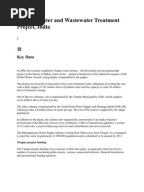Cii Sohrabji Godrej Green Business Centre Pdf Merge
Contents • • • • • • • • Indian Green Building Council (IGBC) [ ] The Indian Green Building Council, part of the Confederation of Indian Industry (CII) was formed in the year 2001. The vision of the council is, 'To enable a sustainable built environment for all and facilitate India to be one of the global leaders in the sustainable built environment by 2025'. The council offers a wide array of services which include developing new green building rating programmes, certification services and green building training programmes.
The council also organises Green Building Congress, its annual flagship event on green buildings. The council is committee-based, member-driven and consensus-focused. All the stakeholders of the construction industry including architects, developers, product manufacturers, corporate, Government, academia and nodal agencies participate in the council activities through local chapters. The council also closely works with several State Governments, Central Government, World Green Building Council, bilateral multi-lateral agencies in promoting green building concepts in the country. IGBC Green league (IGL) by IGBC Mumbai Chapter [ ] The foremost objective of IGL is 'Learning & Growing: Together'. The particular initiative has taken by IGBC Mumbai Chapter.
Residential buildings in India: The residential building sector is one of the largest consumers of electricity in India. Continuous urbanisation and the growth of population result in increasing power consumption in buildings. Thus, while experts express the huge potential for energy conservations in this sector, the belief still predominates among stakeholders that energy-efficient buildings are more expensive than conventional buildings, which adversely affects the “greening” of the building sector.
The Reserve Bank of India’s buildings in Delhi and Bhubaneswar, the CII Sohrabji Godrej Green Business Centre and many other. Samsung Dvr Shr 2160 Software Engineer. In Pursuit of Greener India. CII – Sohrabji Godrej Green Business Centre Survey No: 64, Kothaguda Post, Near HITEC City Hyderabad -500084, Andhra Pradesh, India.

This belief is contested by studies finding evidence for the opposite being the case. EDGE Program in India [ ] The, a member of the, and the, apex body of private real estate developers, have partnered to promote green buildings in the country through IFC’s. An MoU was signed in the presence of Minister for Environment and Forests on November 25, 2014.
BEE certification [ ] The Indian (BEE) launched the Energy Conservation Building Code (ECBC). The code is set for energy efficiency standards for design and construction with any building of minimum conditioned area of 1000 Sq mts and a connected demand of power of 500 KW or 600 KVA. The energy performance index of the code is set from 90 kWh/sqm/year to 200 kWh/sqm/year where any buildings that fall under the index can be termed as 'ECBC Compliant Building' Moreover, the BEE launched a five-star rating scheme for office buildings operated only in the day time in three climatic zones, composite, hot&dry, warm&humid on 25 February 2009.
IGBC rated green buildings are also able to meet or exceed the ECBC compliance. The CII Sohrabji Godrej Green Business Centre is a BEE 5 star-rated building.
The Reserve Bank of India's buildings in, Bhubaneshwar in and in Kerala have been star rated. In Tamil Nadu 11 buildings were star rated by BEE, in the year 2010, including RBI buildings. Green houses [ ] In Tamil Nadu, the government is planning to build solar-powered green houses for rural poor. It has allotted Rs.1058 crore for construction of 60,000 houses. In Maharashtra, near Mumbai in the Thane District, Govardhan Eco Village, a community in India, has built buildings with compressed stabilized Earth blocks, Rammed Earth Technique, Cob Houses(ADOBE Bricks) with traditional thatched roofs.
These buildings have received a five-star rating from GRIHA, an Indian Nationwide Green Standards for Buildings, a wing of the famous TERI. Traditional buildings [ ] Traditional buildings were energy efficient because architecture depended on the places. Buildings in the hot and dry regions, had corridors directing the wind to cool naturally.
In wet regions, structures using natural light and breeze, were used. Some examples are • - Articulated windows provides cool breeze in a desert area • - Ventilation is designed to let in fresh cool breeze, in spite of summer. The traditional building practices were utilized in constructing the. Mud mortar stabilized with lime, sand, alum and some herbal additives was used. See also [ ] • • • • References [ ].
• Dr Shivraj Dhaka (14 July 2016). Retrieved 14 July 2016. Missing or empty title= () •. Retrieved 16 March 2015. Business Standard. Retrieved November 25, 2014.
Ministry of New & Renewable Energy, Indian Government. Retrieved 20 January 2012. NewDelhi, India. 26 February 2009. Times of India.
Chennai, India. 23 July 2010. Madurai, India. 14 November 2011. Business Standard. New Delhi, India. 26 March 2010.
• T A Vijayasanan.. University of Michigan. Archived from on 22 July 2012. Retrieved 27 April 2012.
National Informatics Centre, Indian Government. Retrieved 27 April 2012. Auroville Earth Institute. Retrieved 27 April 2012.
Isha foundation. Retrieved 27 April 2012.